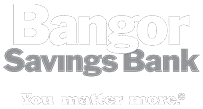
When you're working to get your personal finances in order and achieve your financial goals, finding a budgeting method that suits your lifestyle is crucial. One effective and time-tested method is envelope budgeting, which continues to help individuals and families stay on top of their spending while aligning with their financial goals.
What Is Envelope Budgeting?
Envelope budgeting is a cash-based budgeting technique that assigns specific amounts of money to various spending categories. Here's how it works:
- Determine Spending Limits: Decide how much money to allocate to each spending category, such as groceries, gas, or entertainment.
- Use Physical Envelopes: Withdraw cash and place the allocated amount into labeled envelopes for each category.
- Spend Only from the Envelope: Stick to using only the cash in the envelope for that category's purchases.
You can replenish your envelopes monthly or after each paycheck, depending on your budgeting cycle.
Steps to Set Up an Envelope Budget System
- Calculate Discretionary Spending: Subtract fixed expenses (e.g., rent, car payments, utilities, and minimum debt payments) from your monthly income. The remaining amount is your discretionary spending budget.
- Allocate Funds by Category: Identify spending categories (e.g., groceries, gas, dining out, entertainment). Use past spending data or future goals to determine how much to allocate to each category. For simplicity, allocate cash in multiples of $20 where possible.
- Prepare Your Envelopes: Label envelopes with the spending categories and amounts. Alternatively, use a durable accordion folder or wallet with tabs for better organization.
- Withdraw and Distribute Cash: Go to your bank or ATM to withdraw the total cash needed for your envelopes. Distribute the cash among the envelopes according to your budget plan.
- Spend Only from the Envelopes: Use cash from the appropriate envelope for purchases. If you make an online purchase, remove the equivalent amount of cash from the envelope and set it aside for deposit back into your bank account.
- Replenish Regularly: At the start of each month or after every paycheck, replenish the envelopes. Decide whether to carry over unspent cash or allocate it to financial goals, such as paying down debt or saving for a vacation.
Pros and Cons of Envelope Budgeting
Pros
- Increased Accountability: Helps prevent overspending by visually tracking remaining funds in each envelope.
- Flexible Adjustments: Easily move money between envelopes to handle unexpected expenses.
- Psychological Benefits: Spending cash often feels more tangible, encouraging mindful purchases.
Cons
- Incompatibility with Online Purchases: Frequent online transactions require adaptations, such as tracking debit or credit card purchases separately.
- Risk of Carrying Cash: Carrying significant cash can be risky if you lose your wallet or live in an area with high theft rates.
- Family Challenges: Sharing envelopes among family members can lead to coordination issues and difficulties accessing the right funds when needed.
Is Envelope Budgeting Right for You?
Envelope budgeting can be an excellent choice for individuals or families looking to control discretionary spending and improve financial discipline. However, it may require adjustments to suit modern spending habits, particularly if online purchases are a significant part of your expenses.
By combining the classic principles of envelope budgeting with digital tools or customized systems, you can create a method that works seamlessly with your lifestyle while helping you achieve your financial goals.
